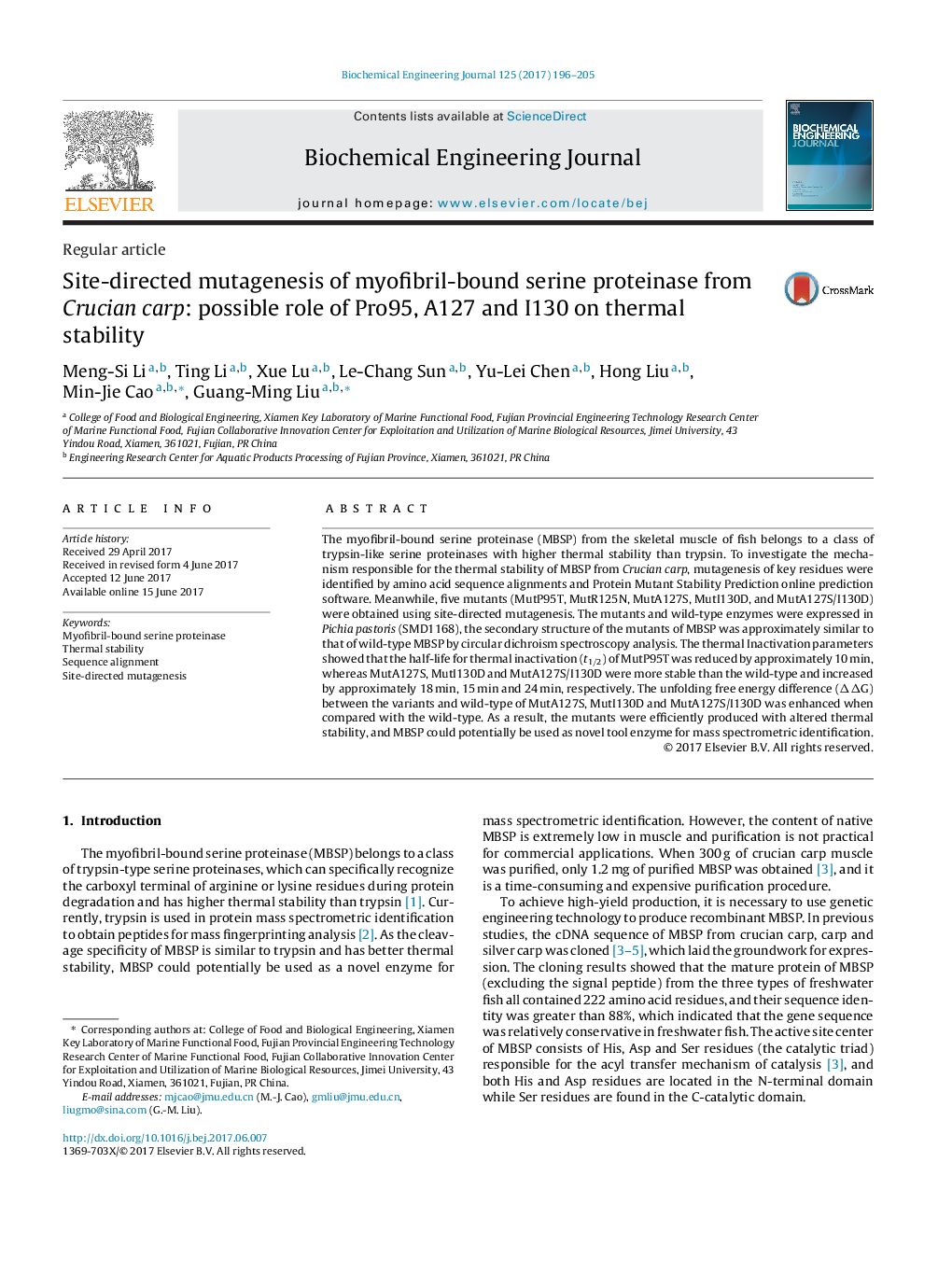| Article ID | Journal | Published Year | Pages | File Type |
|---|---|---|---|---|
| 4752138 | Biochemical Engineering Journal | 2017 | 10 Pages |
â¢The un-glycosylated MBSP with biological activity can be obtained in P. pastoris.â¢PoPMuSiC algorithm was applied to predict thermostable MBSP.â¢Site-direct mutagenesis was used to explore the thermostability mechanism of MBSP.â¢Model analysis show that 3D-structure changes may influence the thermostability.â¢Hydrophobic interaction, hydrogen bond can stabilize the conformation of the MBSP.
The myofibril-bound serine proteinase (MBSP) from the skeletal muscle of fish belongs to a class of trypsin-like serine proteinases with higher thermal stability than trypsin. To investigate the mechanism responsible for the thermal stability of MBSP from Crucian carp, mutagenesis of key residues were identified by amino acid sequence alignments and Protein Mutant Stability Prediction online prediction software. Meanwhile, five mutants (MutP95T, MutR125N, MutA127S, MutI130D, and MutA127S/I130D) were obtained using site-directed mutagenesis. The mutants and wild-type enzymes were expressed in Pichia pastoris (SMD1168), the secondary structure of the mutants of MBSP was approximately similar to that of wild-type MBSP by circular dichroism spectroscopy analysis. The thermal Inactivation parameters showed that the half-life for thermal inactivation (t1/2) of MutP95T was reduced by approximately 10Â min, whereas MutA127S, MutI130D and MutA127S/I130D were more stable than the wild-type and increased by approximately 18Â min, 15Â min and 24Â min, respectively. The unfolding free energy difference (ÎÎG) between the variants and wild-type of MutA127S, MutI130D and MutA127S/I130D was enhanced when compared with the wild-type. As a result, the mutants were efficiently produced with altered thermal stability, and MBSP could potentially be used as novel tool enzyme for mass spectrometric identification.
Graphical abstractDownload high-res image (182KB)Download full-size image
